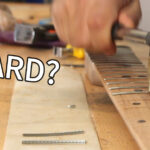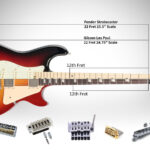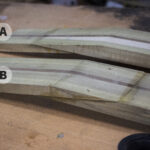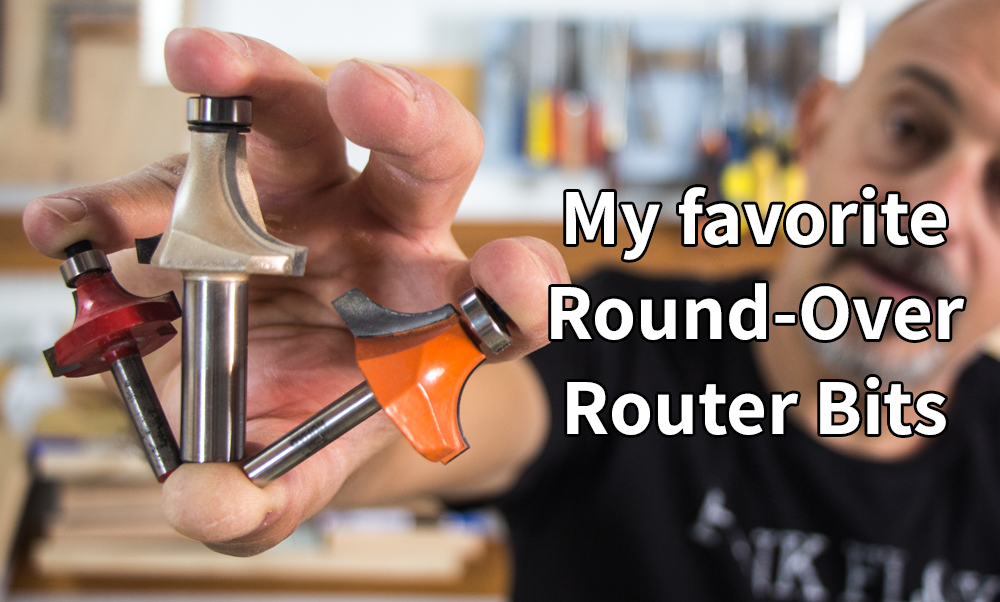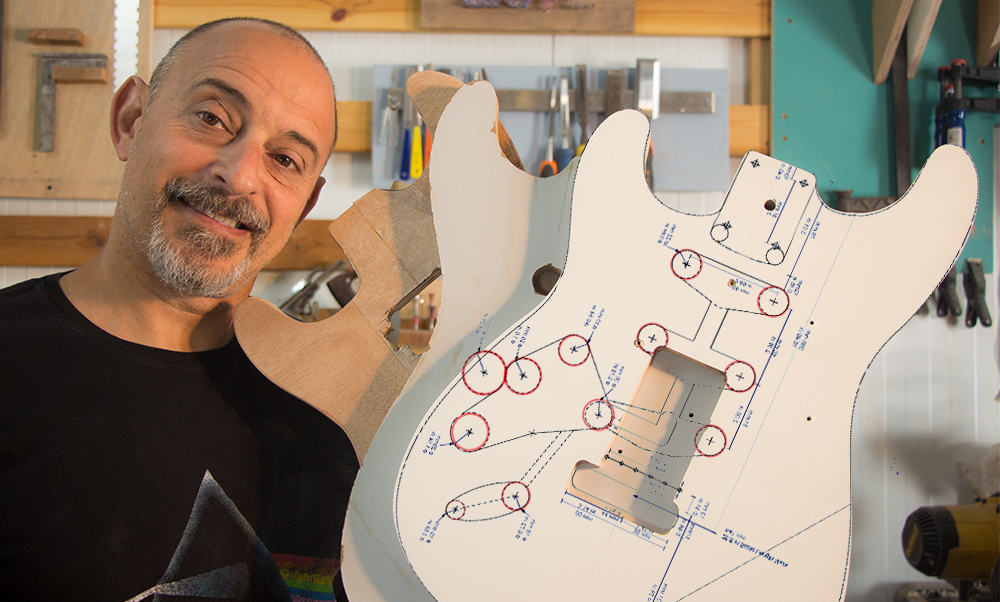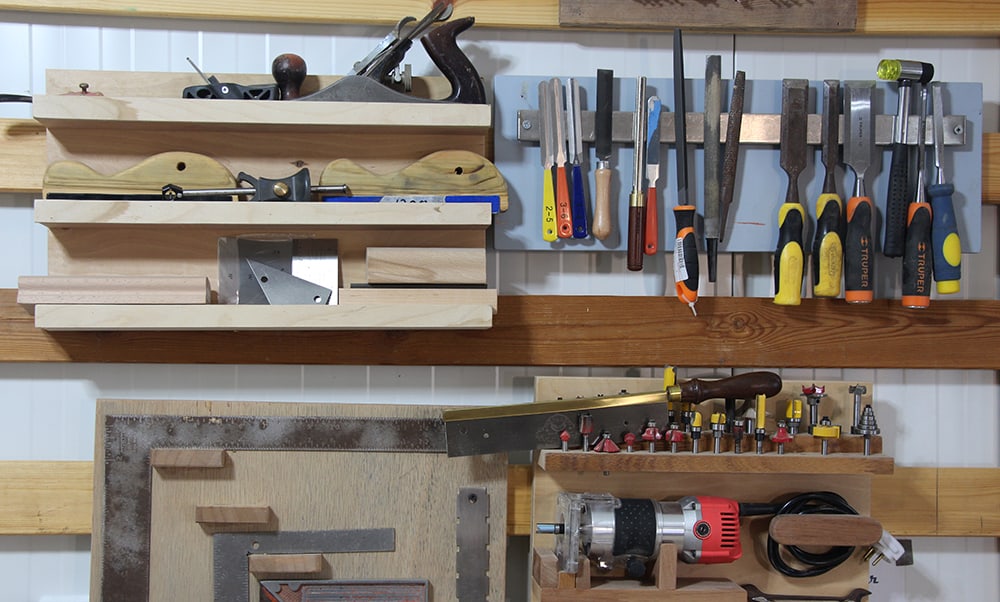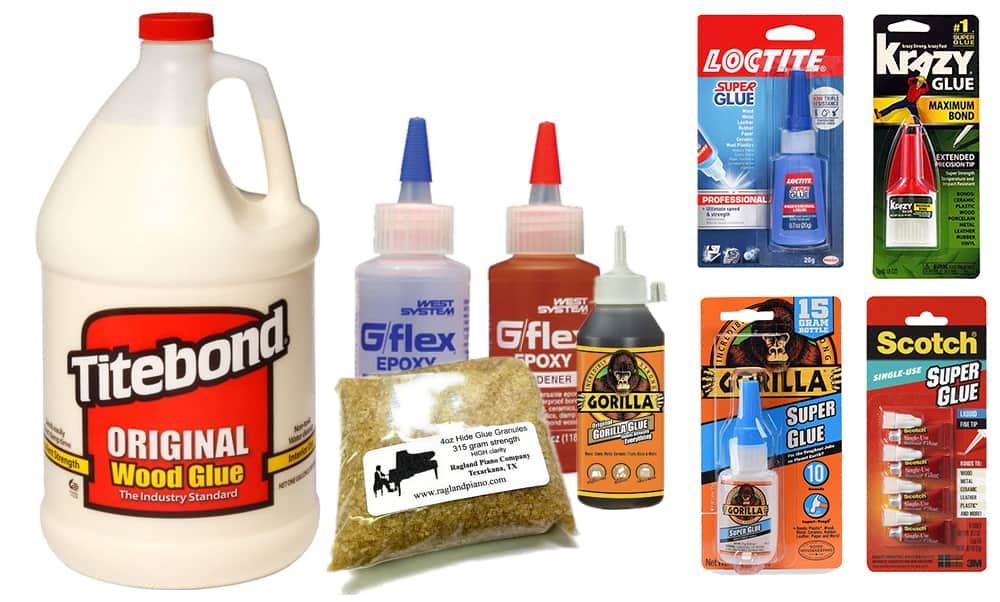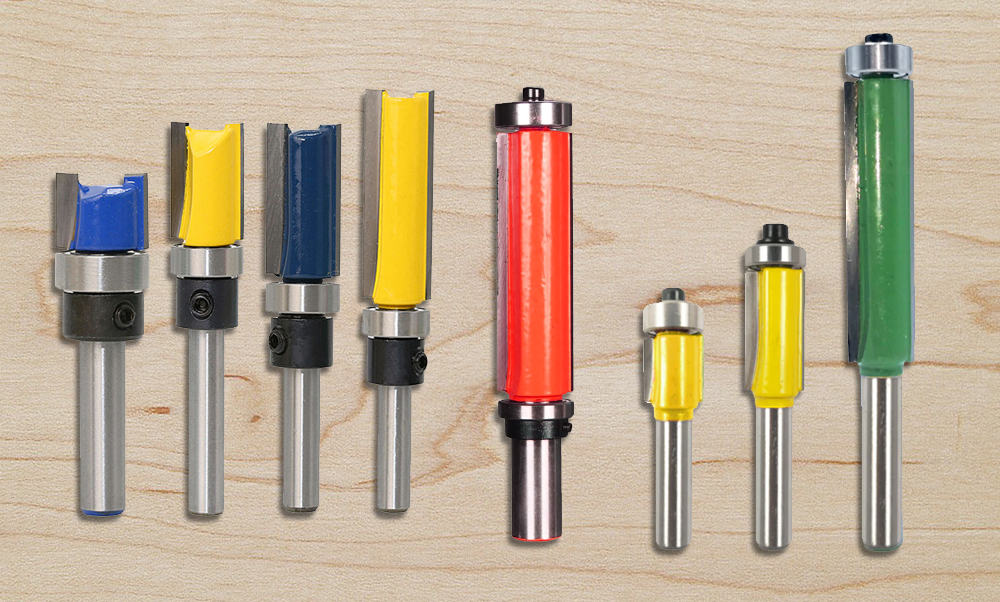When building a guitar, Round-Over Router Bits, can be a very handy tool to have in your toolbox. Short of a CNC machine, routers, router bits and roundover bits in particular are a sure way to get you quick results and a great finished look with the least amount of effort.
How and where to use Round -Over Router Bits ?
Round-Over Router Bits come in various radii and sizes. Their most obvious use is rounding edges, and even there is variety. They can be used on the body, for different types of guitars and even on the neck, if you are trying to cut corners.
In this article I am going to show you 3 of my favorite Round-Over bits and how they can be useful in different parts of the guitar, and you may be surprised. The different sizes are great for different radii of a round edge, but also give you options for some less conventional uses, when building a guitar. I’ll go through all three and show you how you can save time and effort while getting great results, quickly.
The Anatomy of a Round-Over Bit
A few words about the anatomy of the round-over bits.
The basic construction of these bits will have a shaft, a blade, and a ball bearing. The shaft usually comes as ¼”, 3/8” or 1/2” if your router is from the USA and uses inches, and 6mm, 8mm and 12mm for the metrics. The shaft will be one piece with the blade for strength.
Make sure you are buying the correct shaft to fit your router or trimmer, and if you are ordering from overseas, make sure you are in the know if it’s millimeters or inches. They do not match. ½” is 12.7mm and a 12mm bit may not fit a ½” router collet.
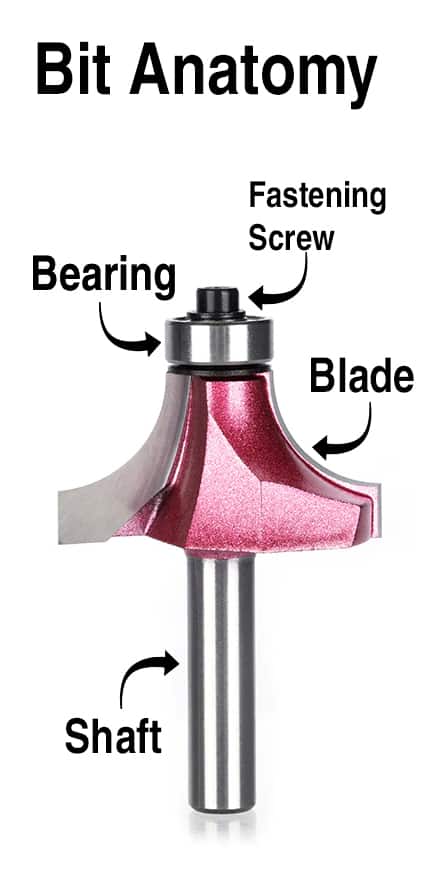
Adaptors
There are adaptors available for example, if you have a ½” collet and a ¼” shaft, but they should have a very tight fit in order to properly secure. (I have a wounded guitar body which is a result of a slightly loose bit). They will also be either metric or imperial so no ‘Mix and matching’ here.
The Blade
The blade will have a round concave profile. Most blades will have a consistant radius, but you may be able to find irregular ones as well. Those may actually be very useful, especially in larger radii. Most bits will have a double blade, some, usually higher quality, may have three or four.
The Ball Bearing
The bearing is there to guide the router along the edge and therefore should have the exact same diameter as the inner side of the blade. As long is the bearing size matches the blade’ there is no real significance to the diameter. Larger diameters will usually be used for larger diameter shafts and larger bits in general. Try and keep fine dust, such as MDF, away from the ball bearing. If it manages to get into the bearing it may hinder it and eventually ruin it.
Different size Bits
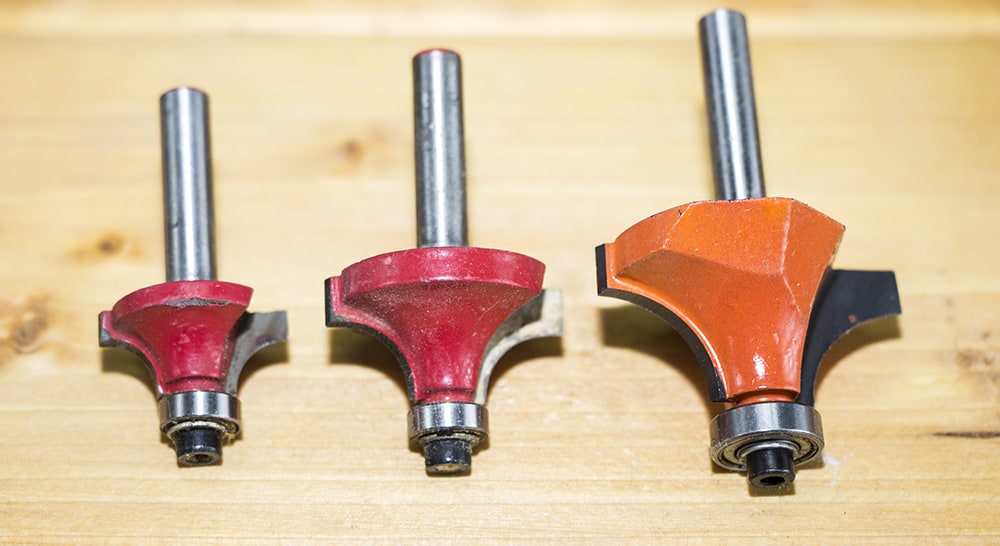
1/8”or ¼” radius
Let’s start with the small one. If you are not binding the guitar and you want a subtle rounded edge, just a bit more than you would get by sanding the edge, this is the one. This little bit will give a nice subtle and consistent edge. It will also give a fairly smooth finish, so to maintain this roundness, you will probably not want to sand it with grits smaller than 220. This little one is a good one to get the feel for working with routers and for most projects it will also do fine on a little trimmer router. These are easier to handle, have less kickback or pull than the big ones, and will be a lot more forgiving. They are sometimes a bit unstable, so I gave mine a larger base and a second handle. (See the Upgrade Video here)
The 1/2” Round-Over Bit
The second one has a slightly larger diameter, of about half an inch or 12mm. If you are Stratocaster fan, this one is a must have. After you have cut out the shape of the body and properly sanded the outline edge, this bit will give you the roundness for the majority of the body. You will still need to sculp the elbow area and the belly cut-tout. But this will take care of the rest. You do need to be carful around the neck pocket, if you have routed it out before rounding the edge. Some older models actually use a 7/16 radius bit, so if you are going for a specific replica and are particular about it, get the correct one. I doubt if anyone can see the difference with a naked eye.
Larger Bit – More Force
The same precautions will need to be taken when mounting it and adjusting the height in relation to the base. However, do take into account that you will be removing more material than the smaller one. What that means is that you will encounter more resistance on the one hand and more pull or kickback if you are not careful. This also increases the chances of tear-outs. With a round-over bit you do not always have a choice to pick the right routing direction in regards to the wood grain so you should learn how to rout in smaller sections and incremental depth. Don’t just push it all in, take little ‘bites’ and advance till you get there. You can always have a final pass to smooth out any inconsistencies.
The Large 1” Round-Over Router Bit
The third bit is used in a less conventional way but in the age of CNCs, anything goes. This is a non-even radius of about 1”. You can get similar bits with specs matching your preference, but the principle is the same. I use this Bit for rounding the back of the neck. The idea is to eliminate the bigger part of the rough grinding and planing to round the back of the neck. One pass on each side will give you a perfect ‘U’ shape. If you prefer a rounder ‘C’ cross-section or a vintage ‘V’, you can manually file and sand a bit more to achieve just that. You can even just sand one side for a non-symmetrical shape. What I am getting at is that you will eliminate about 95% of the rough grinding and filing. If you look around you should be able to find the exact radius to get profile you are aiming for.
Routing Bit Issues
Pre-Routing Attention
Check for the integrity of the ball bearing.
This one came as a part of a cheap Chinese set. I think the whole set was under 20$ so my expectations weren’t too high to begin with, but when you see a wobbly or broken bearing, you do not want to use it, you may damage your guitar. If the bearing is not firm and flush with the blade, the cutting will not be either. You can easily replace the bearing itself, or just get a new bit. It’s not a bad idea to have some spare bearings, or even ‘borrow’ from other, less used bits, with the same diameter.
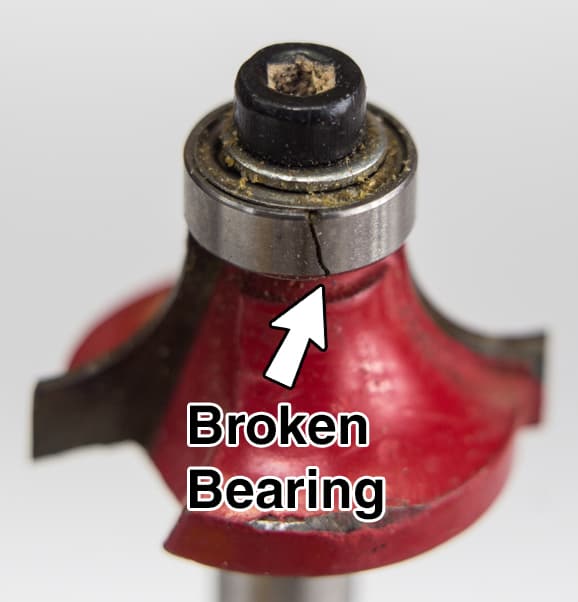
Blade Height
The second thing to look for is that the other side of the blade is flush with the base, or the table plane, if that’s how you are using it. If the bit protruding too much, the edge of the blade will create a step before the rounding. This can be a decorative addition, when done on purpose but is usually not what you are looking for. This can be mostly fixed with sanding but the result will not give the radius you wanted since you have routed too much material.
If on the other hand, the bit is too deep in the base, you will get an uneven radius which will have a sharper angle at the top. Since not enough material was shaved here, the base can be adjusted and a second pass will remedy the problem.
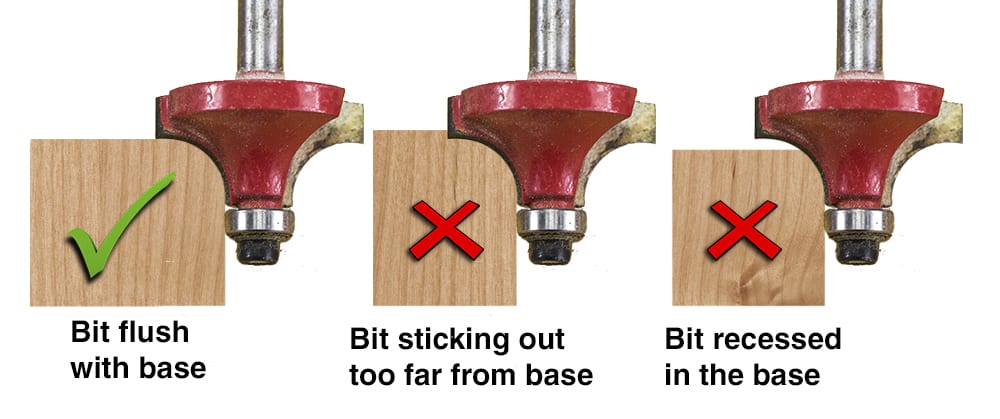
It is a good habit to always check that the blade is properly mounted by testing it on a scrap piece of wood.
A few tips for routing the back of the neck.
- This will be better to do on a table and not with a hand held router. Holding your router straight, especially after you have done one side, is next to impossible. If I had to use it manually, I would make a Jig for support.
- Take the thickness into account, with the fretboard. You may be left with a thicker spine in the middle of the back, between the two routes.
- If you like extra thin necks, you may want to rout with its original template attached, because the neck and the fretboard may not be thick enough to provide a good surface for the bearing to roll on. This also depends on the exact build and size of the bit itself.
- If you want the thickness to be gradual, you should sand it flat with the gradual thickness before routing. Many guitars will have a couple of millimeters or about an 1/8” difference between the thickness at the nut and at the heel.
- Take into account the headstock and volute on one side and the heel on the other. Don’t route too far on either side, measure and mark your limits taking the whole radius into account. (it’s better to do a bit more hand carving than ruin a neck)
The mandatory Caution advisory for routers
Lastly, I have to remind everyone who is not experienced with routers to give them that extra measure of attention and respect. They are fast, sharp, loud and make a lot of sawdust. Be careful and use protective gear for your eyes, ears, mouth and nose.
Practice makes perfect
I do encourage testing and playing around with scrap pieces of wood to get used to these tools. Experiment with scrap wood and make all the little mistakes and mishaps as painless as possible for both you and the guitar.
I hope this was helpful and will help you get into those round edges with ease. Now go build a guitar.

